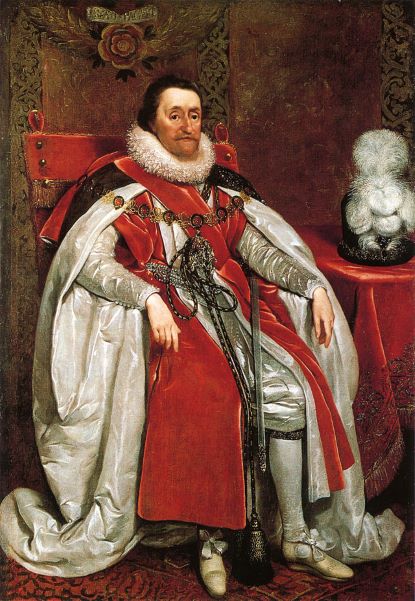Randal McDonnell and King James
ClanDonnell was a powerful clan in County Antrim, with its domain extending to Coleraine, Down and Armagh. The McDonnell clan fought an on-again-off-again war in the late 1500s against England which lasted several decades.
The war ended as a draw! The McDonnells kept their lands and authority in County Antrim and recognized the British king or queen as their sovereign.
With this agreement, the McDonnells were able to hold on to their land well into the 1600s – longer than most of the Celtic Catholic clans.
The penal laws were enacted in the 1600s and, among other things, the penal laws outlawed priests and prohibited any practice of the priesthood. It also punished citizens who gave aid or comfort to any priest.
Randal McDonnell was chief of ClanDonnell in 1621. And a priest lived in this home. A local official charged Randal with violation of the penal laws.
Randal did not mount any defense. Instead, he pled guilty. He claimed only that the priest was his house chaplain.

This put British King James in quite a conundrum. On the one hand, he had to enforce his own law, and Randal was clearly guilty of violating the penal laws.
On the other hand, Randal was a loyal British subject – at a time when there was considerable unrest and rebellion in Ireland. Randal was probably the King’s favorite Irishman, and the King consulted with him on many occasions. The king even appointed Randal as the 1st Earl of Antrim.
So what was King James to do?
He decided to give Randal special dispensation. He ruled that, despite the penal laws, it was acceptable for a lord to have a house chaplain.
Randal took full advantage of his special ruling.
He and his family had many homes throughout the north of Ireland. Each one thereafter had a house chaplain.
Some of these homes had many, many house chaplains.
These persecuted, and otherwise homeless, priests became house chaplains of the McDonnell clan.
Note:
The portrait on the top of the page is of Randal McDonnell. The portrait on the middle is of King James I by Daniel Mytens in 1621.
I’ve told this story a number of times. Brothers of the Ancient Order of Hibernians especially like it.
